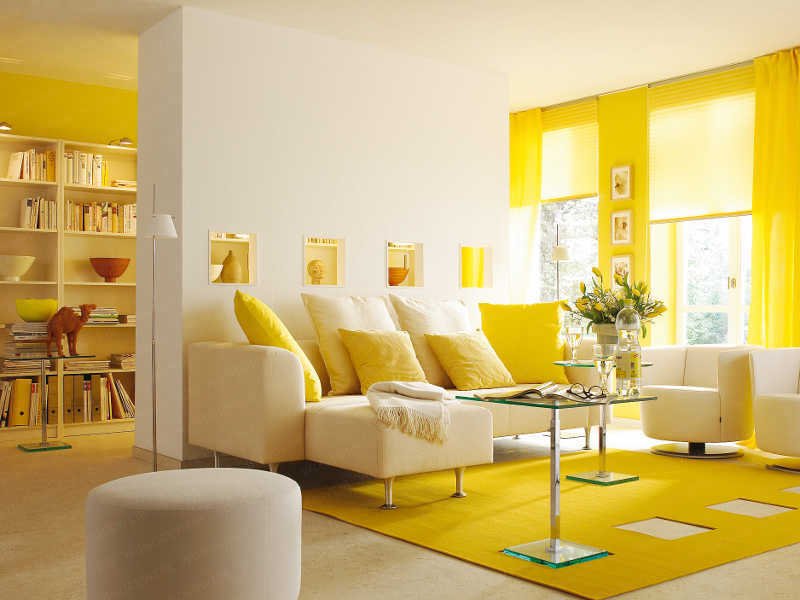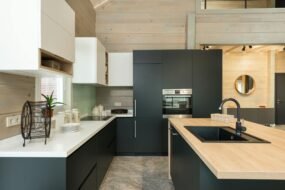

Introduction
our home isn’t just where you live—it’s a reflection of how you feel, think, and behave. Research in environmental psychology shows that design choices such as color palettes, furniture placement, and lighting schemes can dramatically affect your emotional state and mental well-being. Whether you’re planning a full remodel or simply rearranging your living room, understanding the psychology of home design can help you create a space that uplifts, energizes, and supports your lifestyle.
Chapter 1: The Power of Color Psychology
Color influences mood more than most people realize. It can stimulate appetite, promote relaxation, or trigger anxiety—depending on how it’s used.
Warm Colors (Red, Orange, Yellow)
Stimulate energy and conversation.
Ideal for dining rooms, kitchens, or social spaces.
Caution: Overuse may lead to restlessness or tension.
Cool Colors (Blue, Green, Purple)
Promote calm, focus, and tranquility.
Excellent for bedrooms, bathrooms, and reading nooks.
Neutral Tones (Gray, White, Beige)
Provide balance and versatility.
Work well in minimalistic or modern designs.
Accent Colors
Use sparingly to inject personality or draw focus.
Can be applied through pillows, rugs, art, or feature walls.
Chapter 2: Spatial Layout & Flow
A poorly arranged room can cause subconscious stress and discomfort. On the other hand, a well-planned layout creates a sense of ease, flow, and functionality.
Open Floor Plans
Encourage sociability and flexibility.
Allow natural light to flow throughout the home.
Important to use furniture or rugs to subtly define spaces.
Feng Shui Principles
Align furniture and elements to balance energy (Chi).
Avoid sharp angles pointing toward sitting areas.
Use round tables and natural elements (wood, water).
Functional Zoning
Create “zones” for specific activities (work, rest, eating).
Avoid mixing energy types (e.g., a treadmill in the bedroom).
Use screens or shelving to subtly divide space.
Chapter 3: Lighting & Mood
Lighting is one of the most powerful, yet overlooked, design tools when it comes to mood regulation.
Natural Light
Enhances mood, boosts Vitamin D, and regulates circadian rhythm.
Use mirrors to reflect light; avoid heavy curtains.
Install skylights or enlarge windows during renovations.
Ambient Lighting
Sets the tone of the room.
Soft, warm lighting promotes relaxation (e.g., living rooms, bedrooms).
Cool white light promotes focus and alertness (e.g., kitchens, offices).
Task Lighting
Essential for functional areas like kitchen counters, reading nooks, or workstations.
Adjustable lamps help reduce eye strain and improve productivity.
Accent Lighting
Highlight art, shelves, or architectural features.
Adds depth and a luxurious feel to interiors.
Chapter 4: Texture, Material & Emotional Response
Touch and texture also impact how a room feels—both emotionally and physically.
Soft Materials
Cushions, throws, rugs, and upholstery create comfort and warmth.
Ideal for bedrooms, lounges, and cozy corners.
Natural Materials
Wood, stone, cotton, and plants promote calm and groundedness.
Integrate into floors, furniture, and decorative accents.
Smooth vs. Rough
Smooth surfaces (glass, metal) feel modern and clean.
Rough textures (exposed brick, woven baskets) create character and warmth.
Chapter 5: Sensory Design & Wellness
Designing a home goes beyond visual appeal—it should also support sensory comfort and mental health.
Sound
Use rugs, curtains, and upholstered furniture to absorb sound.
Consider soundproofing for bedrooms or home offices.
Add soundscapes (water fountains, ambient music) to soothe.
Smell
Incorporate natural scents through essential oils, candles, or indoor herbs.
Scents like lavender and eucalyptus promote relaxation.
Temperature
Smart thermostats can maintain comfort and save energy.
Heated floors or ceiling fans can enhance physical comfort.
Chapter 6: Designing with Purpose
Your space should support your goals and lifestyle. Intentional design can reinforce healthy habits, increase productivity, and reduce stress.
Productivity Corners
Home offices should be in low-traffic areas.
Use ergonomic furniture and adjustable lighting.
Keep visual distractions to a minimum.
Wellness Areas
Create yoga, meditation, or reading nooks.
Use calming colors and minimal clutter.
Integrate nature (plants, natural light, scenic views).
Family Zones
Design flexible spaces where people can gather.
Include modular seating or extendable tables.
Display family photos or art to boost emotional warmth.
Chapter 7: Tips for Applying Psychological Design Principles
Start with One Room: Redesign one space at a time to stay intentional.
Observe Your Emotions: How does each room make you feel? Adjust accordingly.
Use Mood Boards: Visualize colors, textures, and furniture before buying.
Declutter: Minimalism is proven to reduce stress and improve focus.
Balance Aesthetics with Functionality: Beauty should never come at the cost of usability.
Conclusion
Your home should be your sanctuary—not just a collection of rooms, but a space that supports your well-being. By tapping into the psychology of design, you can craft an environment that boosts your mood, enhances your focus, and brings comfort to every corner. Whether you’re repainting walls or rethinking your layout, let your emotional needs guide your design choices.
Recent Comments
Categories
- Blog
- Budget-Friendly DIY
- Careers
- Crafts and Hobbies
- Decor and Design
- Design
- Featured Post
- Holiday and Special Occasion Projects
- Home Improvements
- Home remodeling
- Innovation
- Inspiration and Ideas
- Lifestyle
- Outdoor Projects
- Step-by-Step Tutorials
- Technology
- Tips and Tricks
- Tools and Materials
- Travel
- Uncategorised
Search
Recent Post
Turning Everyday Spaces Into Beautiful, Functional Homes
- 24 December 2025
- 2 min read
How to Find DIY Inspiration When You
- 24 December 2025
- 2 min read
Budget-Conscious Remodeling Ideas That Still Feel High-End
- 24 December 2025
- 2 min read







